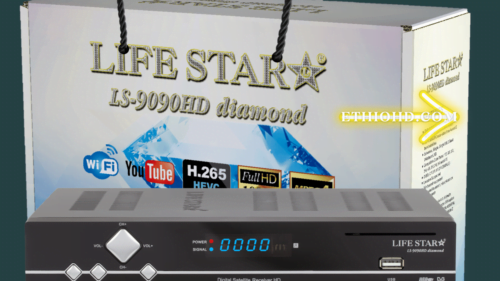In the ever-evolving landscape of satellite technology, SD satellite receivers hold a unique position, catering to a wide audience seeking reliable and cost-effective television solutions. Let’s dive into the world of SD satellite receivers, exploring their features, advantages, and the factors to consider when choosing the right one.
I. Introduction
As technology advances, the demand for high-quality entertainment grows, making satellite receivers a crucial component of modern households. In this article, we will explore the significance of SD satellite receivers and why they continue to be a popular choice among consumers.
II. What is an SD satellite receiver?
SD, or Standard Definition, satellite receivers form the backbone of traditional television broadcasting. These receivers translate signals from satellites into images and sound for your television. They come in various types, including standalone boxes and integrated units within television sets.
III. Advantages of SD satellite receivers
Cost-effectiveness and accessibility
One of the primary advantages of SD satellite receivers is their affordability. These receivers provide a budget-friendly option for individuals looking to enjoy satellite television without breaking the bank. Additionally, their widespread availability makes them accessible to a broad audience.
Compatibility with older television models
SD satellite receivers offer compatibility with older television models that lack the hardware required for newer technologies. This makes them an ideal choice for those who prefer keeping their existing TVs while still enjoying satellite broadcasts.
Reliable signal reception
In areas with challenging terrain or adverse weather conditions, SD satellite receivers often outperform their high-definition counterparts. The technology behind SD receivers ensures a more robust signal reception, making them a reliable choice for viewers in various locations.
IV. Choosing the right SD satellite receiver
Selecting the appropriate SD satellite receiver involves considering several factors to ensure it aligns with your specific needs. Factors such as signal strength, compatibility with your TV, and additional features like recording capabilities should be taken into account. Let’s compare some popular models in the market to help you make an informed decision.
V. Installation and setup
Installing and setting up an SD satellite receiver might seem daunting, but with a step-by-step guide, the process becomes straightforward. From connecting cables to configuring settings, we’ll walk you through each stage. Additionally, we’ll provide troubleshooting tips for common issues you might encounter.
VI. Maintenance and care
To ensure optimal performance, regular maintenance of your SD satellite receiver is essential. We’ll share tips on cleaning, updating software, and handling common issues without the need for professional assistance. Keeping your equipment in top condition guarantees a seamless viewing experience.
VII. SD satellite receivers vs. other options
In a market flooded with HD and 4K satellite receivers, understanding the distinctions is crucial. We’ll compare SD receivers with their higher-definition counterparts, weighing the pros and cons of each option. Whether you prioritize cost, picture quality, or additional features, this comparison will guide you in making the right choice.
VIII. Future of SD satellite receivers
As technology advances, the future of SD satellite receivers might raise questions about their continued relevance. In this section, we’ll discuss the enduring significance of SD technology and explore potential advancements that could enhance the user experience.
IX. User testimonials
Real-life experiences provide valuable insights into the performance and reliability of SD satellite receivers. We’ll share testimonials from users who have embraced this technology, shedding light on the positive outcomes and benefits they’ve experienced.
X. Industry trends
The satellite receiver industry is dynamic, with constant innovations shaping its trajectory. Stay informed about current trends, from the integration of smart features to the exploration of more efficient broadcasting methods. We’ll also make predictions about future developments that could further revolutionize the industry.
XI. Frequently Asked Questions (FAQs)
Are SD satellite receivers compatible with all TVs?
Can I upgrade my SD satellite receiver to HD in the future?
Do SD satellite receivers provide access to streaming services?
What should I do if my SD satellite receiver loses signal during bad weather?
Are there any specific channels dedicated to SD broadcasts?
XII. Conclusion
In conclusion, SD satellite receivers remain a reliable and cost-effective choice for individuals seeking quality television entertainment. From their affordability to compatibility with older TVs, SD receivers offer a unique set of advantages. As we navigate through the ever-changing landscape of satellite technology, the enduring relevance of SD satellite receivers is a testament to their staying power.
Download All SD Satellite Receive software
Click to download on their model name here
🌟 Amaz Star 9500 SD Software 🌟
🌟 Classic Star ES 9200 Software 🌟 “No Flash”
🌟 Eurostar SD New Software 🌟 Eurostar 9200,9300,9500,9600 SD New
🌟 Eurostar SD Old Software 🌟 Eurostar 9200,9300,9500,9600 SD Old






